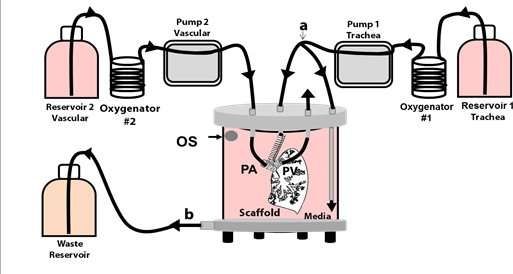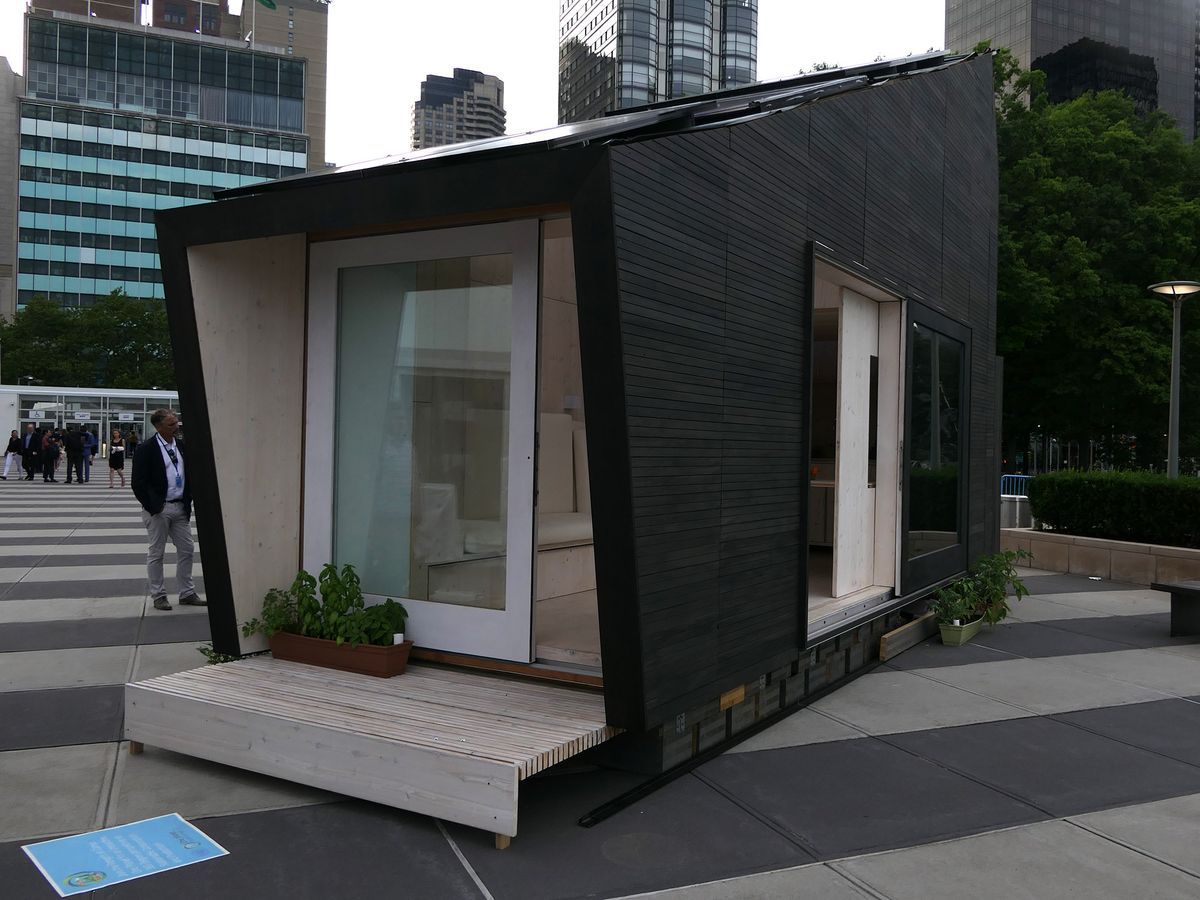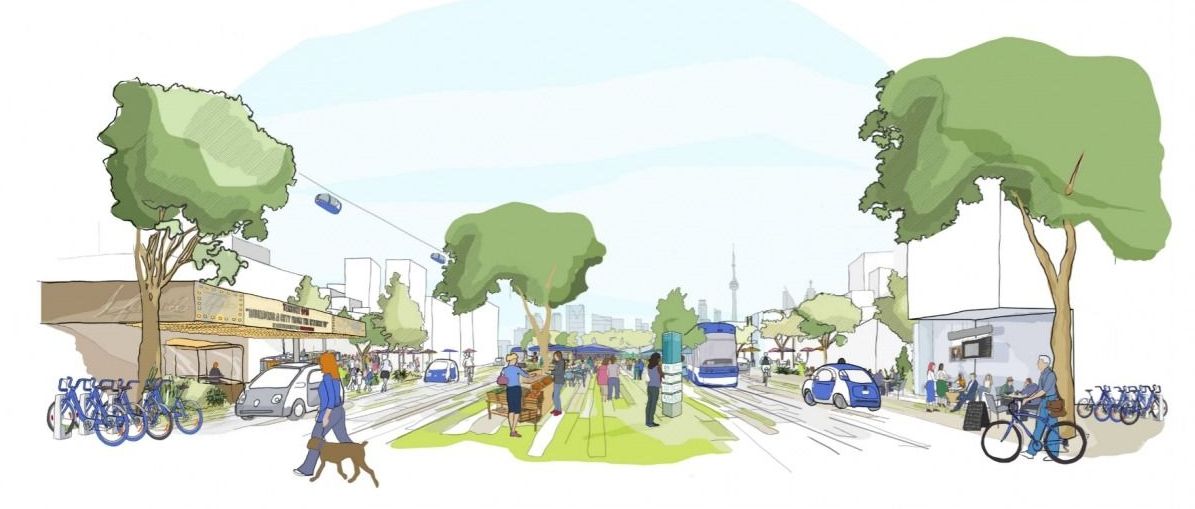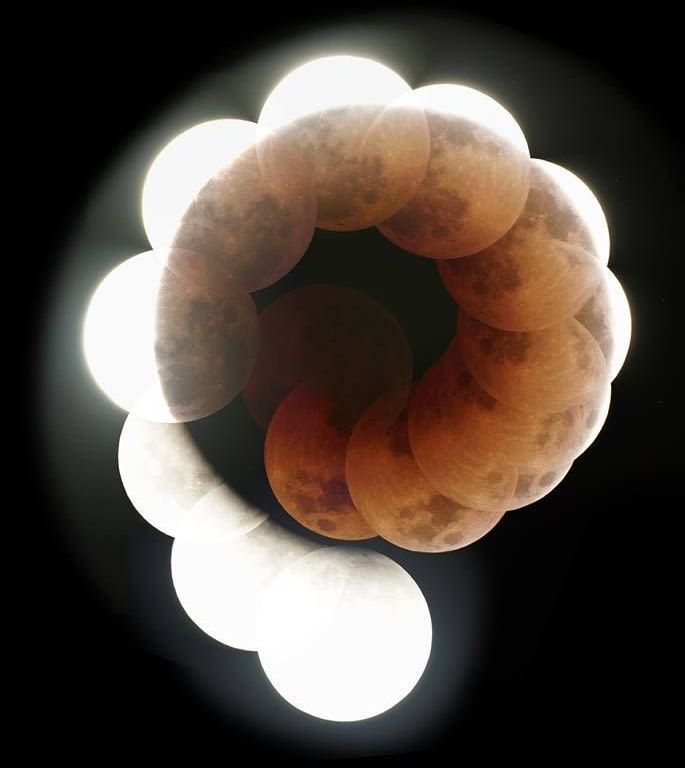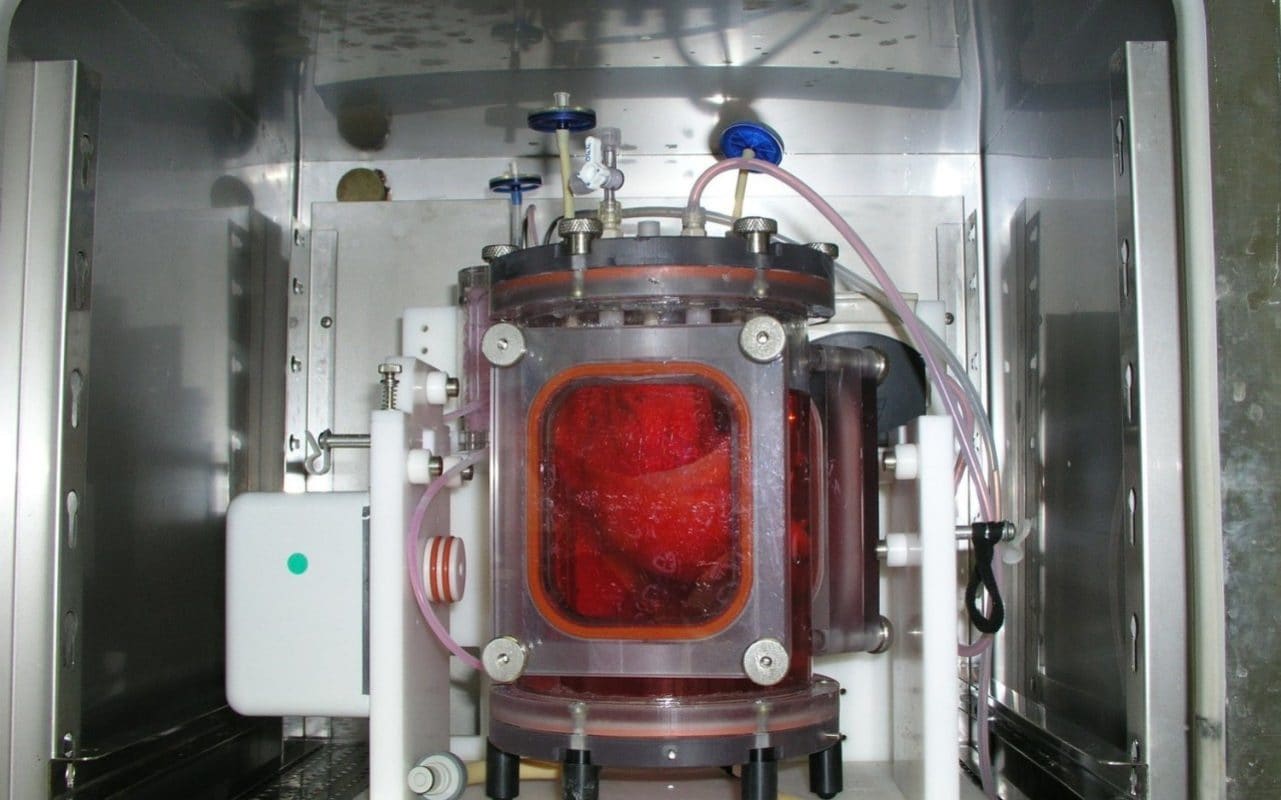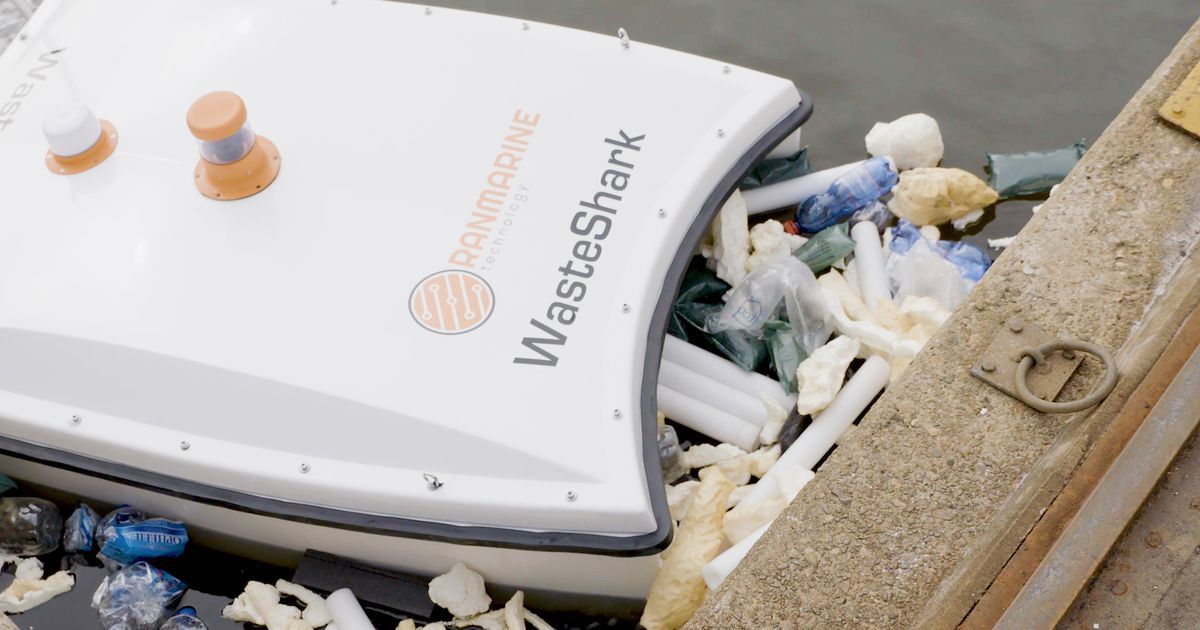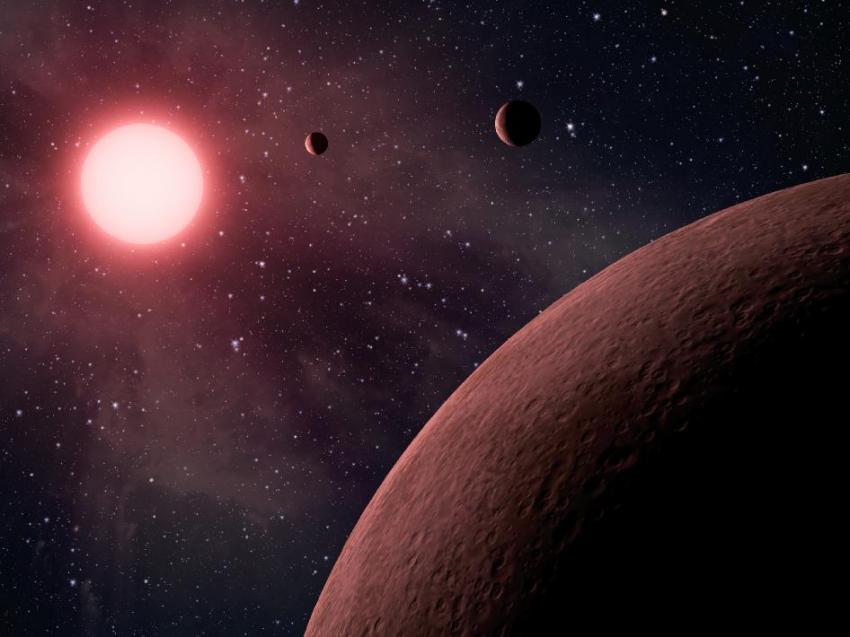Page 9313
Aug 1, 2018
Researchers successfully transplant bioengineered lung
Posted by Dan Kummer in categories: bioengineering, biotech/medical
A research team at the University of Texas Medical Branch have bioengineered lungs and transplanted them into adult pigs with no medical complication.
In 2014, Joan Nichols and Joaquin Cortiella from The University of Texas Medical Branch at Galveston were the first research team to successfully bioengineer human lungs in a lab. In a paper now available in Science Translational Medicine, they provide details of how their work has progressed from 2014 to the point no complications have occurred in the pigs as part of standard preclinical testing.
“The number of people who have developed severe lung injuries has increased worldwide, while the number of available transplantable organs have decreased,” said Cortiella, professor of pediatric anesthesia. “Our ultimate goal is to eventually provide new options for the many people awaiting a transplant,” said Nichols, professor of internal medicine and associate director of the Galveston National Laboratory at UTMB.
Continue reading “Researchers successfully transplant bioengineered lung” »
Aug 1, 2018
Miracle in Midtown: Tiny House May Be Answer to a Global Crisis
Posted by Bill Kemp in categories: climatology, habitats
As heat and humidity soared and New Yorkers slowed their famously fast strides to cope, a small miracle happened in Midtown: A single-family house was assembled in three days.
The tiny 22-square-meter (237-square-foot) prototype, on display on United Nations Plaza, is designed for a family of four. It’s self-sustaining, producing drinkable water from the air, energy from the sun and food from a vertical vegetable garden embedded in the exterior walls. And at an expected price of about $35,000, it may provide an affordable answer to a global housing shortage.
“In this climate, this home would produce enough food for a family of four for about 260 days” out of a year, said Anna Dyson, a professor of architecture and forestry and environmental studies at Yale University. “In better climates — in Africa, for example — it could actually produce a surplus of food.”
Continue reading “Miracle in Midtown: Tiny House May Be Answer to a Global Crisis” »
Aug 1, 2018
Even Alphabet is having trouble reinventing smart cities
Posted by Bill Kemp in categories: business, government, robotics/AI
An ambitious smart-city project spearheaded by Alphabet subsidiary Sidewalk Labs has run into local resistance, causing delays.
The backstory: Waterfront Toronto, a development agency founded by the Canadian government, partnered with the Google sister company in October 2017 to create a futuristic neighborhood on the Toronto waterfront. Sidewalk Labs plans to fill the 12-acre plot with driverless shuttle buses, garbage-toting robots, and other gadgets to show how emerging technologies can improve city life.
The problem: Sidewalk Labs’ connection to Google and vague descriptions of its business model alarmed privacy advocates and urban planners from the start. Local pushback has increased since, causing a key supporter to resign from the project and delaying the release of its final development plan to spring 2019.
Continue reading “Even Alphabet is having trouble reinventing smart cities” »
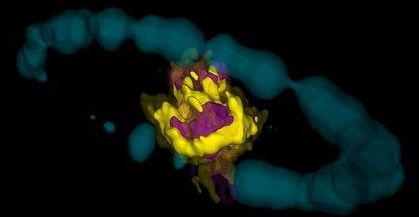
This video takes the viewer on a tour of a 3D image of the supernova 1987 A, created using data collected by the international astronomy facility ALMA. The p urple area indicates emission from SiO molecules and the yellow area indicates emission from CO molecules. The blue ring is NASA/ESA Hubble Space Telescope data that has been artificially expanded into 3D.
Aug 1, 2018
Newly-discovered type of lung cell has central role in cystic fibrosis
Posted by Genevieve Klien in category: futurism
A new type of lung cell is rare in our bodies, but is the main place where the gene involved in the common hereditary condition cystic fibrosis is active.
Aug 1, 2018
Here’s What Earth’s Shadow Actually Looks Like
Posted by Genevieve Klien in category: existential risks
The 21st century’s longest lunar eclipse has passed, eclipse doomsday fever has subsided, and all that’s left are the memories and pictures, which you can find everywhere online. But one image really stood out to us—not because of the way the Moon looked, but because of how it made the Earth look.
Australian amateur astronomer Tom Harradine had always wanted to create an image of the Earth’s umbra, the darkest inner region of the shadow. But during an eclipse, the Moon doesn’t pass through the whole of the Earth’s shadow. He needed a trick in order to show the whole thing.
“One way, I thought, to get the full circle of the umbra from a single eclipse event is to artificially locate and rotate successive eclipse images so as the shadow boundary forms a circle,” he said. “The trick is to keep the curvature of the shadow matching up as precisely as possible. Which images to choose is up to artistic license and I chose a spiral effect, not only to show the umbra but to also show the progression of the eclipse as time went on.”
Continue reading “Here’s What Earth’s Shadow Actually Looks Like” »
Aug 1, 2018
Grow-your-own organs could be here within five years, as scientists prove they work in pigs
Posted by Genevieve Klien in categories: bioengineering, biotech/medical
Grow-your-own organs could be available for desperately ill patients within five years, after scientists successfully transplanted bioengineered lungs into pigs for the first time.
The team at the University of Texas Medical Branch (UTMB) showed that lab-grown organs were quickly accepted by the animals, and within just two weeks had developed a network of blood vessels.
Previous attempts have failed with several hours of transplantation because the organs did not establish the complicated web of vessels needed for proper oxygen and blood flow.
Aug 1, 2018
Meet the aquatic WALL-E that could help clean our oceans
Posted by Genevieve Klien in category: drones
The WasteShark may have a scary name, but really it’s an awesome little water drone that preys on trash in urban waters to prevent it from reaching our oceans.
Aug 1, 2018
Scientists identify exoplanets where life could develop as it did on Earth
Posted by Genevieve Klien in category: alien life
Scientists have identified a group of planets outside our solar system where the same chemical conditions that may have led to life on Earth exist.
The researchers, from the University of Cambridge and the Medical Research Council Laboratory of Molecular Biology (MRC LMB), found that the chances for life to develop on the surface of a rocky planet like Earth are connected to the type and strength of light given off by its host star.
Their study, published in the journal Science Advances, proposes that stars which give off sufficient ultraviolet (UV) light could kick-start life on their orbiting planets in the same way it likely developed on Earth, where the UV light powers a series of chemical reactions that produce the building blocks of life.

